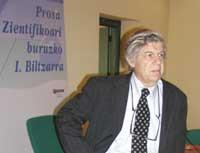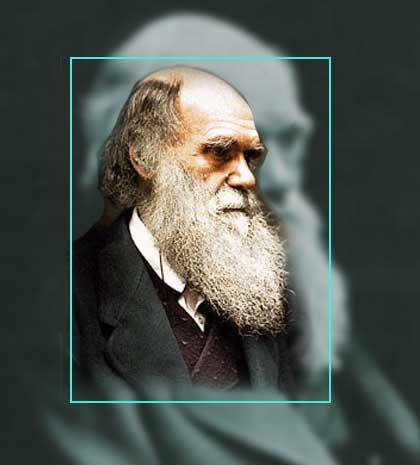Cheated brain
2011/12/21 Carton Virto, Eider - Elhuyar Zientzia
The account of this column is composed of two issues related to the human brain that have no relationship with each other, and the only reason to appear in common is the chain in my head.
The main story revolves around the greatest discrepancy between Darwin and Wallace and Stephen Jay Gould collected in his book “Natural Selection and the Human Brain: Darwin vs. Wallace” through a short essay.
Although Wallace unequivocally defended natural selection as a mechanism for species evolution, he denied that human brain and intelligence could be a consequence of natural selection, unlike Darwin. Knowing this denial was a great discontent for Darwin, since in the letters addressed to Wallace he said clearly: “I hope you haven’t completely murdered your son,” and on the other hand, later: “If you didn’t tell me, I would have thought those words were added by someone else. As you expected, I have to show him deep disagreement and I have a great sorrow.”
It has happened to the pages of history as Wallace's incomprehensible contradiction to believe that human intelligence is not due to natural selection but to God; and emptiness is attributed to Wallace's lack of courage or the impossibility of facing the idea of the exceptionality of the human being. Gould, however, presents negation in his attempt as a coherent consequence of Wallace's hyperselective vision. According to Gould, Wallace had a very rigorous vision of evolution and natural selection: evolution was governed by natural selection, always driven by variants that favored adaptation to the environment, so all variants and characteristics existing in living beings had to be adaptive.
But the human brain did not fulfill that strict Wallace equation. Like almost nobody of the time, Wallace recognized that the “savages” had brains like the “fine Europeans” and, under the influence of a “European formation”, were able to integrate into the “highest culture of the Europeans”, while in their primitive societies they gave the brain a much more limited use. This meant they had capabilities that were latent and were created before it was needed and used. But since useless capabilities could not be the result of natural selection, the human brain and its capabilities, according to Wallace, must have been created by higher intelligence, “in a concrete direction and with a concrete objective.”
To the end, coherent or cowardly, it is evident that Wallace was wrong, although 150 years later we continue to deceive ourselves, exaggerating the design, efficiency and functioning of the brain. Faced with such challenges, there is no better antidote than the merciless description of neuroscientist David Linden in his book The accidental mind. For him, the adjective that best fits the brain is the cludge. And what is a cludge? There is the word invented by the English to designate an effective solution to a problem through the use of sudden parts of each other, from circumloquies to a problem and a twisted solution. I conclude with an analogy that Linden uses to illustrate the limitations of brain design and organization: suppose we have been commissioned to build the most efficient car model possible, and we have been told that the condition to do so is to start from the structure of a 1925 Ford T and that we must do so by adding parts without just removing anything from the original. With these foundations the human brain has been built, as it is the result of evolution that is needed.
Published in Berria

Gai honi buruzko eduki gehiago
Elhuyarrek garatutako teknologia






